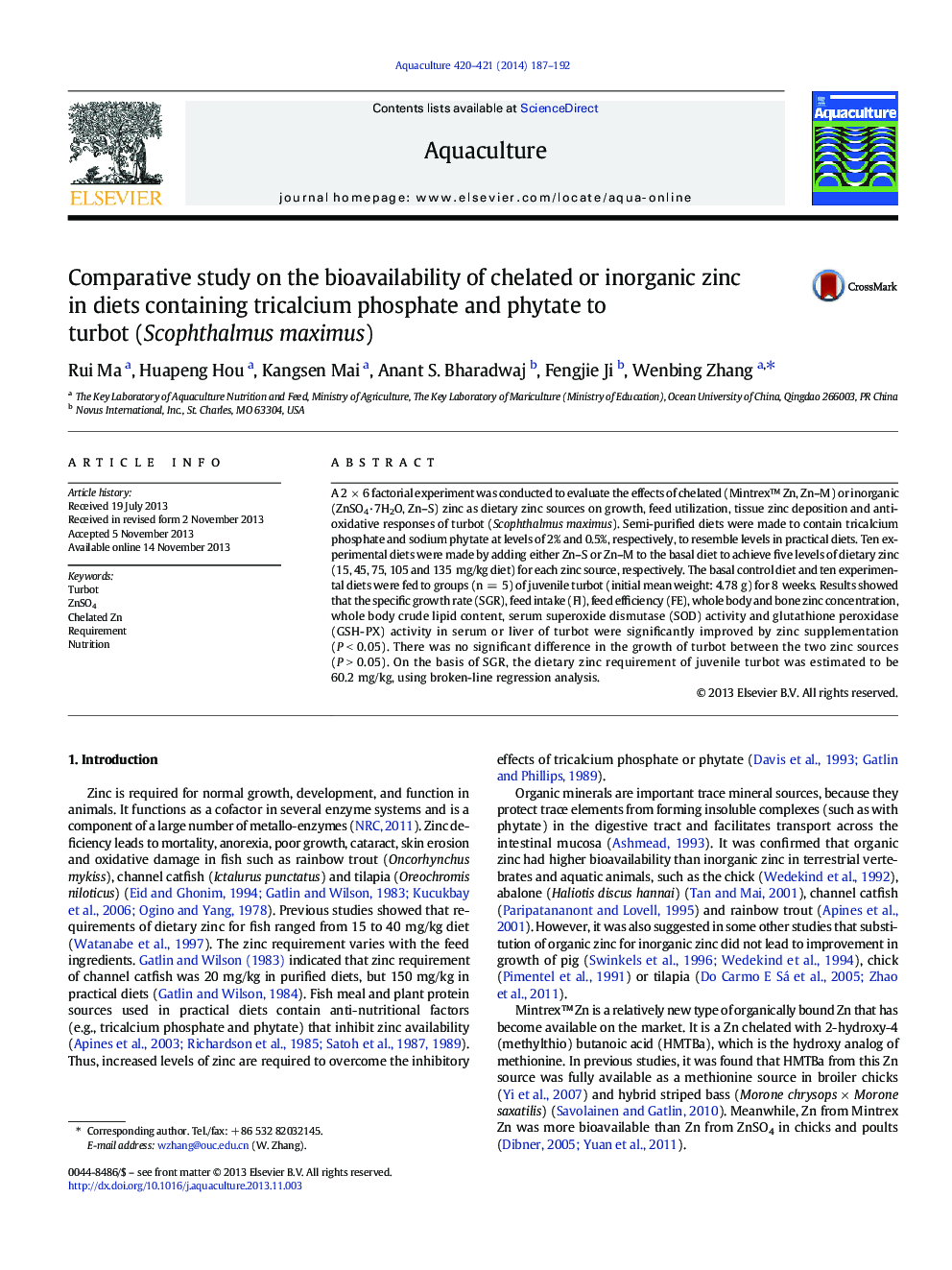| Article ID | Journal | Published Year | Pages | File Type |
|---|---|---|---|---|
| 2421991 | Aquaculture | 2014 | 6 Pages |
•Bioavailability of chelated (Mintrex Zn) or inorganic (ZnSO4) zinc was studied.•The growth of turbot significantly increased with dietary Zn levels.•There was no significant difference in the turbot growth between the two Zn sources.•Dietary zinc requirement of turbot was 60.2 mg/kg based on the growth data.
A 2 × 6 factorial experiment was conducted to evaluate the effects of chelated (Mintrex™ Zn, Zn–M) or inorganic (ZnSO4·7H2O, Zn–S) zinc as dietary zinc sources on growth, feed utilization, tissue zinc deposition and anti-oxidative responses of turbot (Scophthalmus maximus). Semi-purified diets were made to contain tricalcium phosphate and sodium phytate at levels of 2% and 0.5%, respectively, to resemble levels in practical diets. Ten experimental diets were made by adding either Zn–S or Zn–M to the basal diet to achieve five levels of dietary zinc (15, 45, 75, 105 and 135 mg/kg diet) for each zinc source, respectively. The basal control diet and ten experimental diets were fed to groups (n = 5) of juvenile turbot (initial mean weight: 4.78 g) for 8 weeks. Results showed that the specific growth rate (SGR), feed intake (FI), feed efficiency (FE), whole body and bone zinc concentration, whole body crude lipid content, serum superoxide dismutase (SOD) activity and glutathione peroxidase (GSH-PX) activity in serum or liver of turbot were significantly improved by zinc supplementation (P < 0.05). There was no significant difference in the growth of turbot between the two zinc sources (P > 0.05). On the basis of SGR, the dietary zinc requirement of juvenile turbot was estimated to be 60.2 mg/kg, using broken-line regression analysis.
